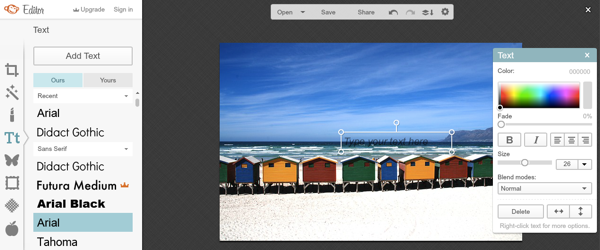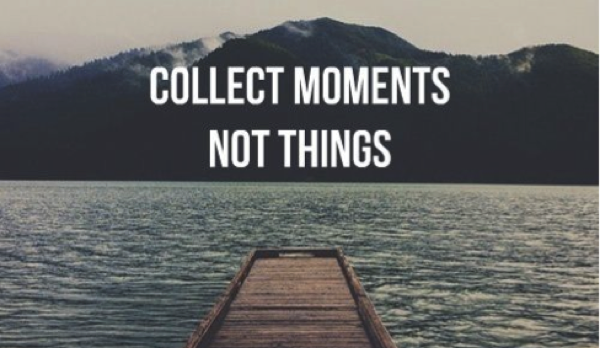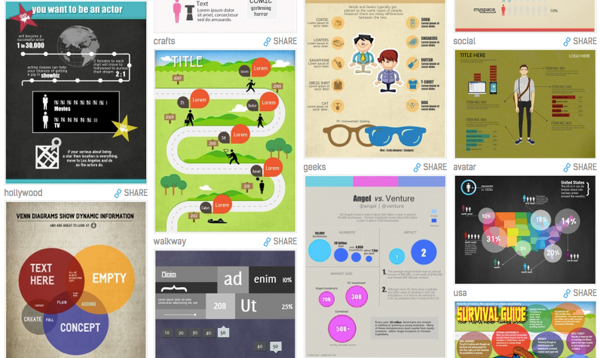How to use images on social media to improve engagement
Today visual content is the most engaging form of content online. And it’s no surprise considering that we’re visual creatures and that our brains process images 60,000 times faster than text. While we retain only 20% of what we read, we remember 80% of what we see.
When it comes to social media, this means one thing: if you want more engagement, use more images. In fact, research has shown that using images has some serious benefits for social media, resulting in an 85% interaction rate on Facebook and increased retweets by 35% on Twitter.
In this post we’ll explain what you need to know about using images to maximise engagement on social media, from what constitutes a great image to tools you can use to create yours.
What makes an image shareable
While images have been shown to increase engagement on social media, they can’t just be any old run-of-the-mill kind of content. To grab attention, your images need to be stunning, attractive or tell a story. They need to give your audience a reason to stop scrolling down and really engage with them.
In other words, your images need to evoke emotion, otherwise no one will notice or share them. These are some of the emotions that you want to evoke:
- Awe
- Amusement
- Inspiration
- Shock
- Fear
- Controversy
Using images that create emotion to tell your story is the first step to becoming more visually engaging on social media.
Here are some useful tips on the type of images that can boost your social media engagement:
- Personal photos. You want to use images to create a story for your brand and the people behind it. Whether it’s from an event or from the office, invite your fans and followers into your inner sanctum. Show them how your products are built and by whom. Give them a look at what goes on behind closed doors. Remember that people do business with people so you should do everything you can to humanise your brand.
- Educational images. Use images to relay a piece of information in a catchy way. Whether it’s a statistic or a fact that is specific to your industry or your product, use images to make the information easier to digest and to remember.
- Images of your fans. The easiest way to get your fans’ attention is to shine the spotlight on them. Give their photos a bigger stage by repurposing them on your own social channels. Favourite them. Retweet them. Tag them. Make it all about them, not you.
Read this post for other types of images that you can use to boost your social media engagement.
How to create engaging images
Now that you know what makes an image shareable on social media, let’s explain how you can go about creating yours. The first thing to consider is image size. Each social network has a different layout that you’ll need to optimise your images for.
The social media image sizes (width by height) for the most popular social networks are:
- Profile picture: 180px x 180px
- Cover image: 851px x 315px
- Shared content image: 1200px x 900px (Timeline); 1200px X 1200px (Newsfeed)
- Profile picture: 400px x 400px
- Cover image: 1500px x 500px
- Shared content image: 1024px x 512px
Google +
- Profile picture: 250px x 250px
- Cover image: 1080px x 608px
- Shared content image: 506px x 284px
- Profile picture: 110px x 110px
- Cover image: Pulls random images from your posts
- Shared content image: 640px x 640px
- Profile picture: 165px X 165px
- Cover image: 215px x 145px
- Shared content image: 735px x unlimited (Expanded Pin)
Tools to create your images
You can create the above images using the following tools:
Canva is an online tool that was created with non-designers in mind. You can get started with a template and then customise it as you wish. You can edit everything from background, text, icons and colours. What’s great about it is that you can save a template and then reuse it. That’s particularly useful for when you add your business logo to your images or when you wish to change the text or a small design element on your Facebook cover image for example.
PicMonkey is another great tool for creating and editing images online. One of the top reasons people love it is the huge collection of fonts. What’s more, if you use a particular font in your branding, they give you the option to upload it and use it in PicMonkey. One thing to keep in mind though is that unlike Canva, with PicMonkey you need to save your final images to your computer.
If you use Pinterest or Instagram a lot, you can’t be without WordSwag. It’s a mobile app that’s ideal for making quick quotes. Whether you choose to use your own images or the backgrounds from their collection, you can easily add your text, choose the font and colours and then simply share away.
This is excellent tool for creating infographics and visual content. With plenty of templates for you to base your design on, it’s just a simple drag, drop and type system that will quickly feel natural to use and help you create some great visual content that will grab your audience’s attention.
Tips to create your own brand style on social media
Be consistent when it comes to your logo size and placement, fonts and colours, and try to create an appealing composition that matches your brand.
Here are a few tips to follow when creating your images for social media sharing:
- Avoid using boring stock images. The best solution is to take your own photos. If that’s not an option for you, then at least don’t use the same boring photos that everyone else is using. There are tons of great sites out there that offer photos that are free to use and don’t look as staged as the typical stock photos. Check out these 18 places where you can find free stock images to use on social media.
- Be consistent with your logo. If you add your logo, make sure it’s consistent in every image. Place it either in the top left or the bottom right so viewers will notice it but won’t get distracted by it.
- Use brand colours and fonts to create a consistent look. Also, try to avoid using too many font families (three is more than enough) or colours.
- Why is consistency so important? Because it can increase your audience engagement on social media by creating familiarity. It’s also an easy way to become memorable and to build brand recognition.
Wrapping up
Sharing unique, relevant and attracting images on social media can really boost engagement. While it depends on your target audience and your type of business, we highly recommend you test it out and see if it works for your business too. If you’re curious about how people are interacting with your social media accounts in general, then you can use the 123 Reg Website Checker to find out. You have all the advice and the tools you need, so now it’s time to get creative.
Have any other tips on how to increase engagement on social media through the use of images?




